Natural Science
Vol.4 No.7(2012), Article ID:20769,7 pages DOI:10.4236/ns.2012.47059
Application of micro-foam drilling fluid technology in Haita area
![]()
1No. 1 Drilling Company of Daqing Drilling and Exploration Engineering Corporation, Daqing, China
2Petroleum Engineering Department, Northeast Petroleum University, Daqing, China; *Corresponding Author: xubobode@163.com
Received 11 April 2012; revised 15 May 2012; accepted 30 May 2012
Keywords: Micro-foam Drilling Fluid; Lost Circulation; Formation Damage Control; Increasing Drilling Rate
ABSTRACT
In recent years, a new kind of drilling fluid system with unique structure micro-foam has been developed. Compared with other drilling fluid systems, it possesses many advantages. And it has been successfully applied in hundreds of wells to drill depleted reservoirs in the world wide. The geological structure is very complex in Haita area, it is difficult to achieve the requirement of increasing drilling rate by conventional drilling methods, even can’t make footage. The micro-foam drilling fluid can apply to Haita area, and solve the drilling problems commendably, which is comprehended by studying the structure and plugging, prevent caving, speed mechanism of the micro-foam drilling fluid. Field practice indicates that micro-foam drilling fluid technology can resolve the drilling problem effectively in Haita basin. It has the extremely vital significance to improve drilling speed, discover and protect reservoir stratum, decrease the risk of circulation loss and save the drilling cost.
1. INTRODUCTION
The upper reservoir of Haita region has some feature, such as strong water-sensitive, the existence of coal seams, loose cement and poor diagenetic nature, so it is easy for the sidewall after the hydration expansion to be unstable. The lower reservoir of Haita region has some more sandstone, conglomerate, mudstone and crack development, in the difference in pressure affect, the drilling fluid filtrate along the cracks flow into the rocks, leading to a sharp decline occurred off the rock strength, collapse and it is easy to make borehole instability. On-site construction have found that it is difficult to control overcut rate, which requires the drilling fluids have a good rejection capability and sealing characteristics. Therefore, using the usual drilling equipment is difficult to the successful completion of the drilling in the region. Using common drilling fluid, overbalance pressure is likely to result in the loss and differential sticking. Using pneumatic drilling fluid or underbalanced drilling technology, the preparation of expensive equipment and drilling fluids can not be stabilized inflatable upper part of the normal pressure strata, so the effects can not be ensured. According to a large number of laboratory test results and field trials, it is recommended that the micro-bubble drilling fluids system should be used in the construction process.
The micro-foam drilling fluid is a new, reusable, low-cost and low-density drilling fluid; it is a waterbased drilling fluid system by the use of surfactants, stabilizers, and tackifiers to be supplemented by other treatment agent. Compared to the micro-foam drilling fluid with conventional water-based drilling fluid system, it has a low density, low hydrostatic pressure, shielding effect, the filtration rate is small, the ability to bring rock, Lubrication, friction loss, cleanup ability anti-pollution effects, fast drilling speed and therefore it has good leakproof, oil and gas layer protection and carrying sand, speed and other effects [1].
2. PHOLOGY AND STABILITY OF THE MICRO-BUBBLE
2.1. The Structure and Morphology of the Micro-Bubble
The micro-bubble diameter ranges between 10 - 100 μm. It consists of two parts: First, soak the fluid core-liquid or gaseous spherical, usually air; two protective outer wall of the bubble outside. Micro-bubble case is obviously different from ordinary air bubble shell, ordinary foam shell is thin, micro-bubble shell structure is relatively complex, and outside there are two layers within the surfactant film, shown in Figure 1 [2]. It can be seen

Figure 1. Amplification of different multiples of the microbubble morphology.
that outside of the micro-bubble as the surfactant layer structure, the structure to make it wet, which makes micro-bubbles and the continuous aqueous phase have good compatibility. But the outer layer of the surfactant bilayer structure with micro-bubbles in other parts of the connection is weak, vulnerable to external environmental effects of flow, due to the outermost surface of the role of the surfactant layer, micro-bubble lipophilicity.
2.2. The Stability of the Micro-Bubble
Factors affecting the stability of the micro-bubble are internal and external causes, including internal foaming agent and foam stabilizer, while the external temperature and time. It can be seen from Figure 1: the shape of the micro-bubble is round, the air within the nuclear, wrapped in a layer of liquid film. Sebba’s theory, the shell folder by the outer and inner layers of surfactant films thickening of the water layer, the radius of the shell is generally up to half of the total radius of the micro-bubble, so that the stability of the entire bubble is very difficult to burst. Gravity drainage is the main reason for the micro bubble destruction: liquid film thinning due to their own gravity drop to a certain extent, the bubble will break up; Furthermore, the loss of the liquid makes bubble motion and speed, speed up the bubbles merge, thus bubble volume larger, eventually leading to bubble burst [3].
2.3. The Jamin Effects at the Pore Throat
Micro-foam drilling fluids containing a multi-level distributed stable foam sphere, when these bubbles sphere under differential pressure flow within the porous medium, or small cracks, wetting because it did not occur with the rocks and occur through the pore throat sphere deformation, the formation of different curvature of the curved surface, shown in Figure 2. According to the Laplace formula , the small radius of curvature of the curved surface of systolic blood pressure greater than the radius of curvature of the curved surface of the resulting role in the direction of micro-bubble flow direction opposite the additional resistance, that is, the Jamin effect, thereby preventing the occurrence of collapse, ensure the stability of the borehole wall.
, the small radius of curvature of the curved surface of systolic blood pressure greater than the radius of curvature of the curved surface of the resulting role in the direction of micro-bubble flow direction opposite the additional resistance, that is, the Jamin effect, thereby preventing the occurrence of collapse, ensure the stability of the borehole wall.
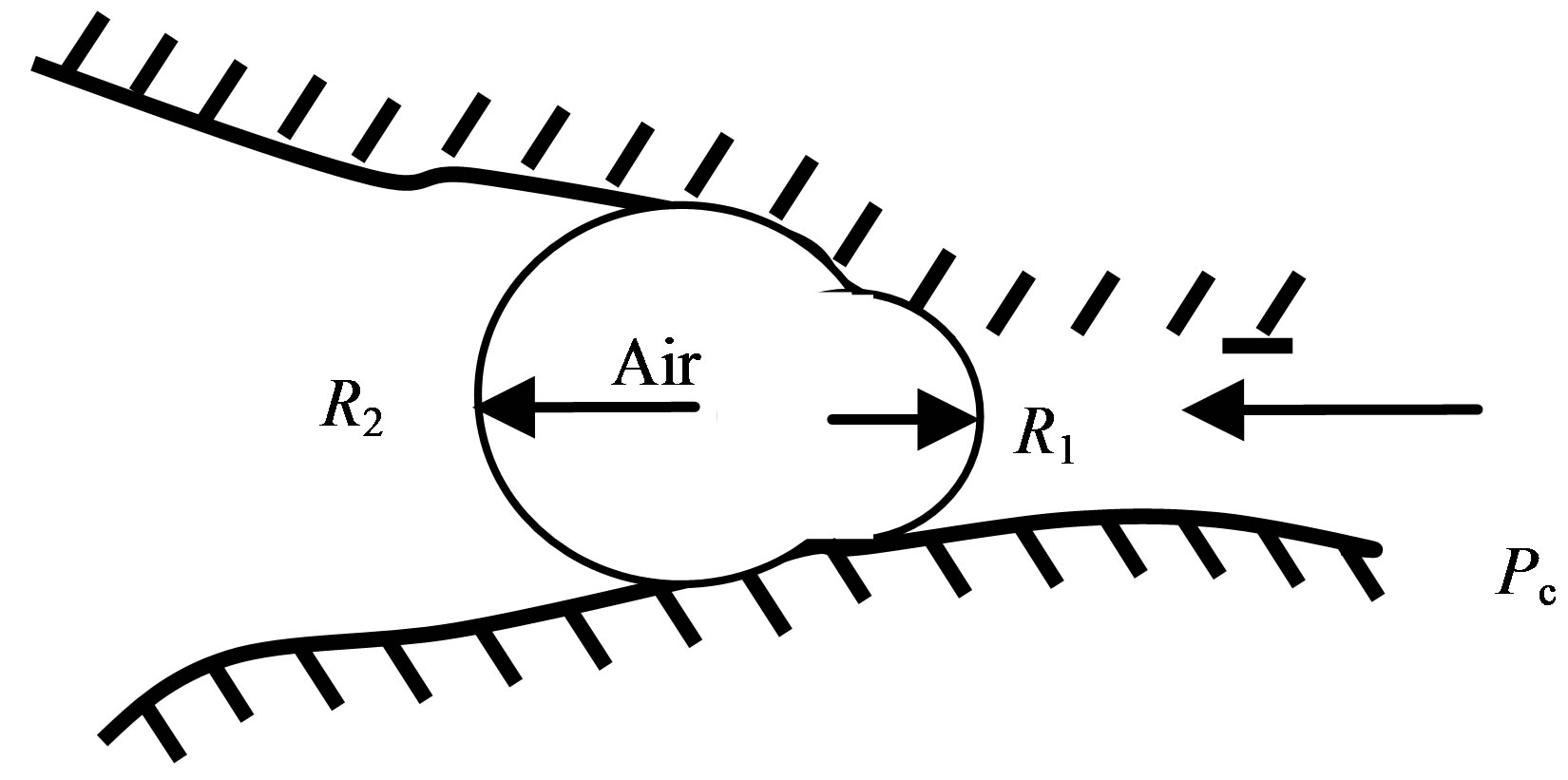
Figure 2. Micro-bubble Jamin effect diagram.
3. MICRO-FOAM DRILLING FLUIDS LEAK PROTECTION AND SEALING MECHANISM
3.1. Decrease Fluid Column Pressure
The micro-foam drilling fluids can decrease the fluid column pressure effectively cause of its low density. Its density varies with the temperature and pressure of different well depth. We separate the well depth into many subparagraphs equally to calculate the fluid column pressure of the well bottom. We assume that every subparagraph is very little, so in this subparagraph the microfoam drilling fluids’ density is a const, and then we can get the fluid column pressure formed by this subparagraph. By adding all the fluid column pressure of subparagraphs, we could get the fluid column pressure of the well bottom. The formula is in Eq.1.
 . (1)
. (1)
In the Eq.1: H—the well depth;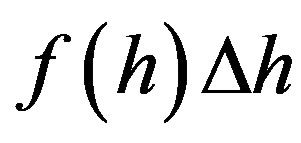 —the function expression of the micro-foam drilling fluids density varies with the well depth; g-acceleration of gravity.
—the function expression of the micro-foam drilling fluids density varies with the well depth; g-acceleration of gravity.
3.2. Plugged Pore and Micro Fracture
The air bubble in the drilling fluids is independent and its fluid film is thicker more than the bubble radius. Cause of the protection of strength composite film, the micro-emulsification bubbles can exist under high pressure, and with the pressure increase micro-bubble volume decreases quickly, but the particle size decreases more slowly, so multi-level distributed micro-bubble spheres play the role of bridging particles and deformation of filler particles in the drilling fluid, and can effectively block the formation of micro cracks.
When the micro-foam drilling fluids circulate to the well, the micro-bubbles within the sealed air is compressed. When drilling low-pressure strata, micro-bubble under differential pressure into the low-pressure pores or cracks, the micro-bubbles in a low pressure environment, the internal part of the energy is released, the microbubble expansion, Laplace pressure of the external sharp increase in the micro bubble aggregation, thus forms a solid phase bridging particles bridging layer.
4. MECHANISM OF ANTI-CAVING OF MICRO-FOAM DRILLING FLUID
Micro-foam drilling fluid has better function of inhibition of mud shale hydration expansion and preventing the borehole wall sloughing. Its mechanism of anticaving is as follows:
4.1. Reduce Penetration Mechanism
The micro-foam which has the deformable particle diameter has the capability of putting up bridge and formation sealing in the pores. Producing physical formation sealing to mud shale can reduce the penetration of water to the mud shale. The micro-foam drilling fluid of low density declines fluid column pressure of drilling fluid and decreases the penetration of water to the mud shale layer. Thus reducing the filtration and the soak effect of filtrate on the wall and effectively decreasing the hydration effect of mud shale [4].
4.2. Film-Forming Anti-Swelling Mechanisms
The microstructure of the micro-foam makes it have the hydrophobic lipophilic property. A large number of surfactant concentrating in the liquid-solid interface reduces the interfacial tension of water and mud shale, effectively prevent pore pressure penetration of mud shale and inhibit mud shale hydration expansion by adsorption film in layer surface.
4.3. Negative Pressure Dehydration Mechanism
The micro-foam drilling fluid has low density and fluid column pressure is less than the layer pore pressure. The activity of micro-foam drilling fluid free liquid can be control below the layer pore fluid activity. Both make the layer fluid flow to the wellbore, producing the negative pressure, thus make the layer mud shale dehydration and prevent the borehole wall sloughing.
5. ACCELERATION MECHANISM OF MICRO-FOAM DRILLING FLUID
5.1. Reduce Pressure to Assist in Breaking Rock
The micro-foam drilling fluid has low density and good rheological property, bottom hole differential pressure is small and drilling cuttings returning in time reduce the repeated cutting of the drill bit. The low static pressure which the micro-foam produce results in the layer pressure of bottom rock imbalance and releasing internal stress into the wellbore, thereby helping to break rock [5].
5.2. Reduce the Circulating Pressure
The micro-foam drilling fluid has better lubrication performance and smaller flow resistance than conventional water base drilling fluid, reduces the pressure loss of drilling fluid circulation system, especially the annulus pressure loss and gives full play to hydrodynamism.
5.3. Improve Ability of Carrying Cuttings
The micro-foam drilling fluid has low density, small circulating pressure loss and quick flow velocity and the micro-foam has a higher low shear viscosity to make its ability of suspension and carry cuttings markedly enhanced.
5.4. Extend the Drill Bit Life
On the one hand, micro-foam shell is surfactant. It can be absorbed on the surface of drill bit, drill tool and rock, forming lubricating oil film to clean drill bit and prevent drill tool from balling up. On the other hand, because the active agent solution in the micro-foam has good wetting property, it will be immersed in rock fracture to arise burst effect, thereby creating the conditions for efficient drilling. In addition, it has a strong ability of clearing bottom hole cuttings, so the drill bit life can be greatly improved.
6. THE TEST OF MICRO-BUBBLE DRILLING FLUID IN THE HAITA FIELD
Using Micro Foam Drilling Fluid can make the Circulating pressure 2 - 3 Mpa lower than using Zwitterionic drilling fluid system, the Pressure drop of the drilling bit can be improved and the clamping effect of the debris at the bottom of a well can be reduced, avoiding the bit cutting debris again and again. Control the loss of fluid to the following of 4.0 ml. Then the cake formed is thin and tough and the effect of anti-sloughing is good. The solid content reduces significantly and the pressure differential of the reservoir reduced by 24.02% reaches 4.11. The hole enlargement is 6.96, decreased by 31.93%. Extend the life of drill bit and screw drill while improving the penetration rate. A substantial increase in the return sand effect improves the hole cleaning effect and reduces the number of tripping without any complicated engineering accidents.
Micro-foam drilling fluid has been used in the 10 wells for test in Haita field and its field application is good. Micro-foam drilling fluid controls the hole diameter to expand and the accidents of collapse effectively. When the Tamu Taga 75 wells were drilled in 2009, micro-foam drilling fluid was applied, of which 49 wells were mainly used in the Nam Theun group and Tongbomiao of wells and etc. Realize the purposes of temporary plugging, reservoir protection, reducing the resistance, increasing the rate and improving the cementing quality. The technology of micro-bubble drilling fluid has been applied in 26 wells of full-well. Compared with more than 30 wells of Tamu Taga without the application of micro-bubble in 2009, the average drilling speed was 22.88 m/h, increased by 47.4% and the density of drilling fluid was 1.12 g/cm3, reduced by 4.27%. And the reservoir has been protected effectively and the drilling statistics are showed in Table 1.
For the purpose of realizing the large speed of Haita from September to October in 2009, micro-bubble drilling fluid has been applied in the tower 19-342-t220 wells, towers 19-332-t208 wells and towers 19-334-t209 wells. The average mechanical drilling rate has increased by 33.75% and the cementing quality rate has reached 100%. The construction cycle and the cementing quality of the three experimental wells has records the best level of Tamu Taga.
6.1. Time Analyses of the Three Test Wells
The three wells which use composite drilling together with micro-bubble drilling fluid to speed up, comparing with the tower 19-335-t213 well that use gender composite ion drilling fluid and pendulum drilling to be applied to the same section, the mechanical drilling rate has a larger substantial increase. The following table 2 is the
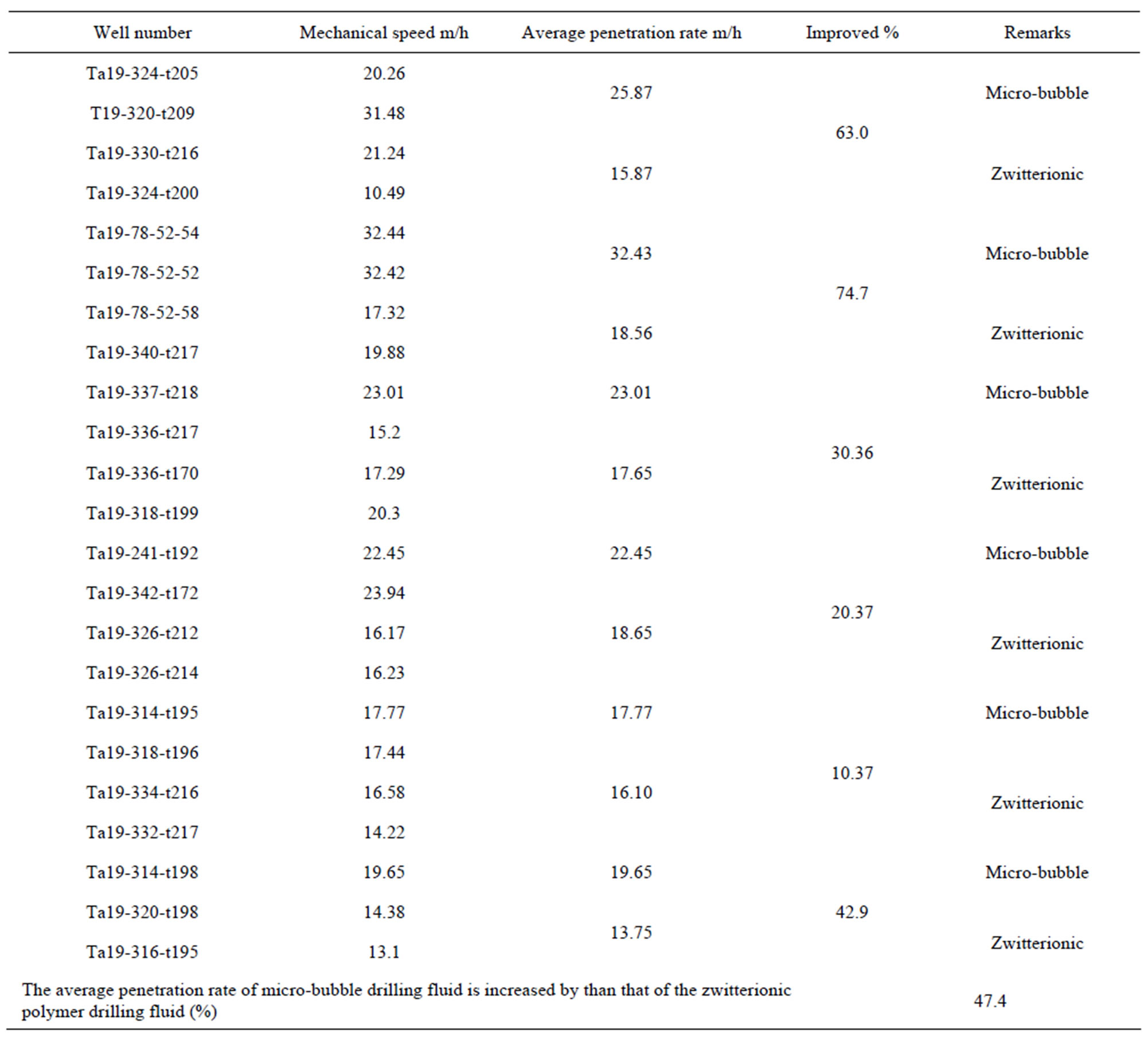
Table 1. Drilling time statistics.
comparison of the penetration rate of the three wells from two to 2236.2 m (the tower 19-335-t213 wells start to correct oblique from 2236.2 m, so there is no comparison) [6].
It can be seen from Table 2 that the machinery drilling rate of combination drive and micro-foam drilling fluids have obtained the increase greatly, with an average increase of 10.24 m/h,which have increased 33.75%.
In order to verify the contribution of micro-foam drilling fluids on the speed, the statistics of drilling speed comparison that Ta19-328-t204 Well which use pendulum drilling rig and Ta19-328-t205 Well using combination drive are as follows shown in Table 3.
From the table we can see that using combination drive have increased 3.46 m/h than pendulum drilling rig in the same well interval. So that the micro-foam drilling fluids contribute to the speed increasing can be approximately considered as 10.24 m/h − 3.46 m/h = 6.78 m/h.
6.2. Average Well Diameter Expansion Rate
Construction of ten micro-foam drilling fluids test wells near nineteen region in the Tamtsag, the average well diameter expansion rate is 13.03%, the average well diameter expansion rate of the three test wells using micro-foam drilling fluids is 10.98%, the average well diameter expansion rate has reduced 15.73%. The relevant comparison of the data can be seen in Table 4.
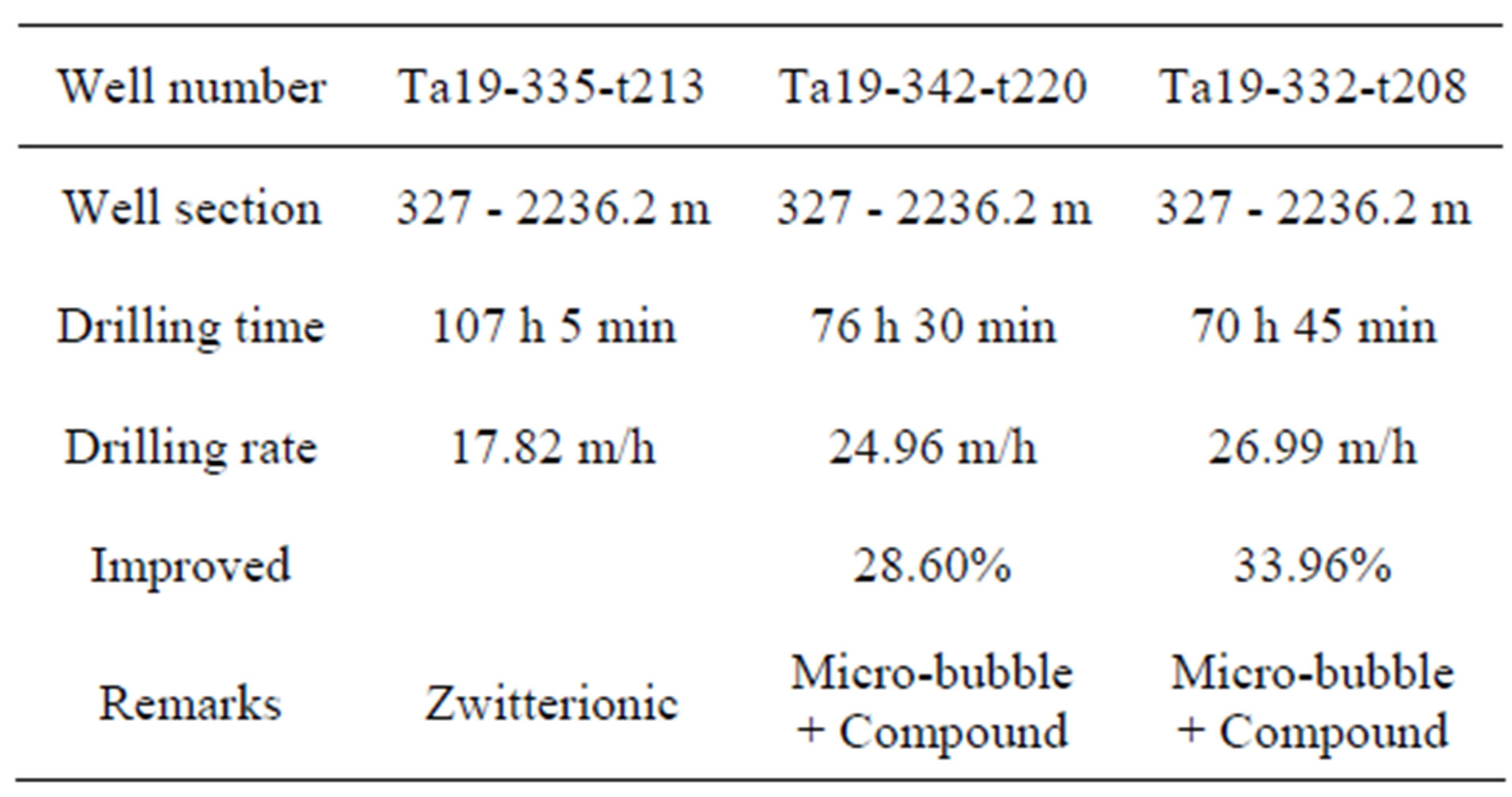
Table 2. Drilling speed comparison of different drill structures and the drilling fluid system of the three wells.
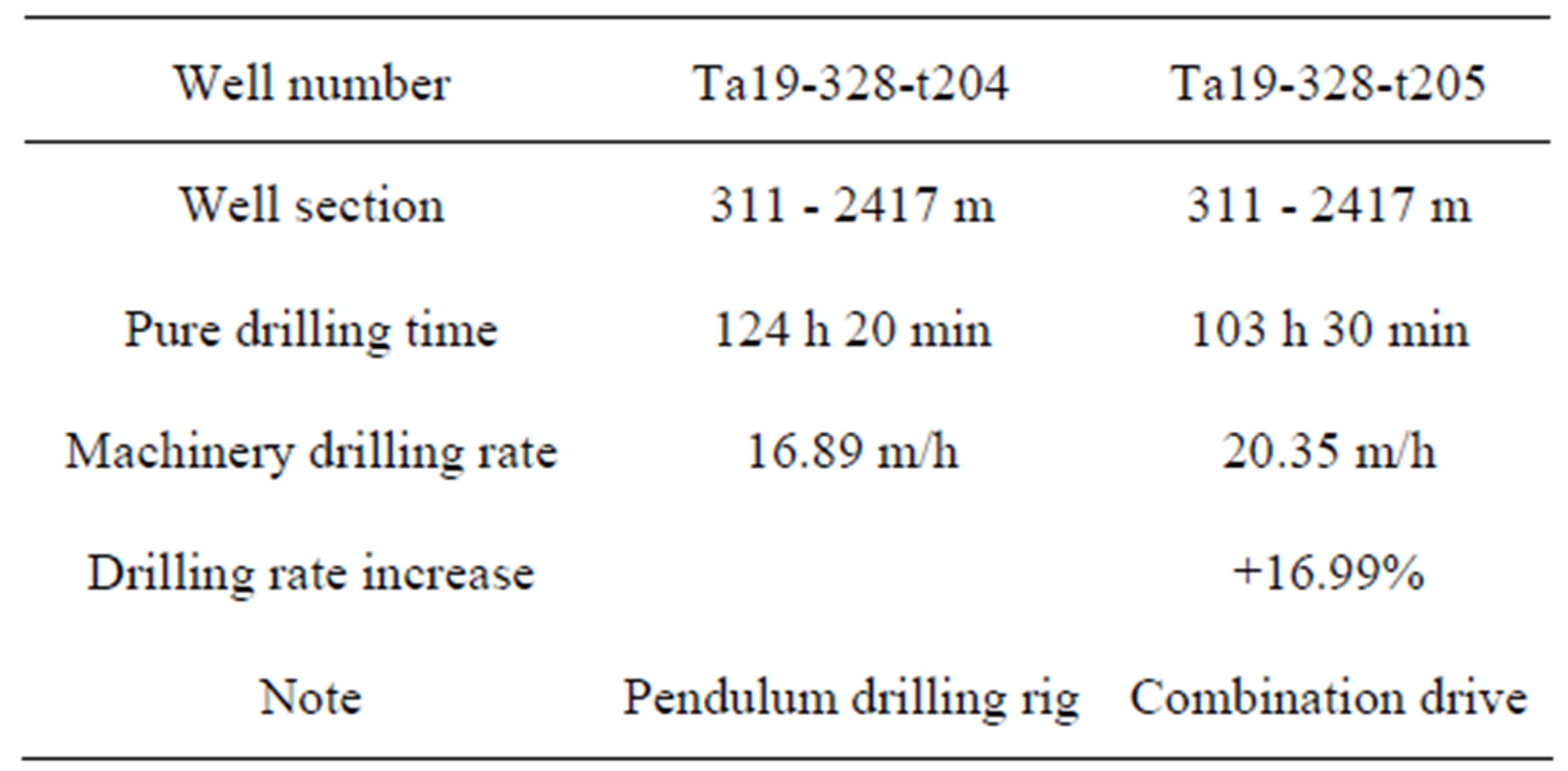
Table 3. The contrast of pendulum drilling rig and combination drive.
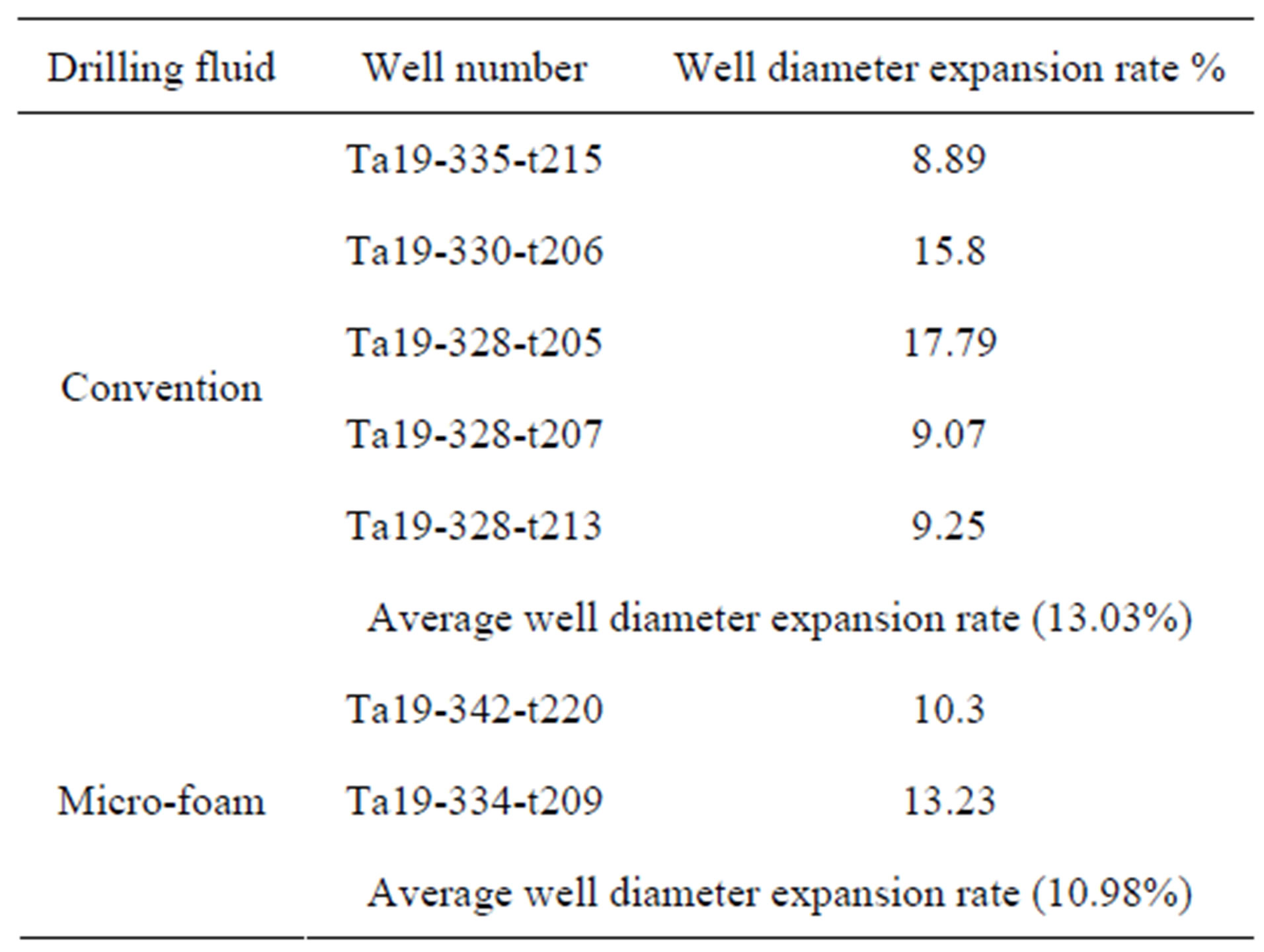
Table 4. Well diameter expansion rate comparison table.
6.3. Well Cementation Quality
The cementing quality rate of three wells which used micro-foam drilling fluids system is 100%. Figure 3 shows the acoustic amplitude contrast of three microfoam drilling fluids of wells and an amphoteric-ion drilling fluids well in the construction.
Mainly due to the micro-foam drilling fluids to improve the cementing quality in three respects: First, micro-foam drilling fluids have the better borehole stability, regular well hole, smaller well diameter expansion rate, which laid the foundation for cementing to improve the displacement efficiency; Second, micro-foam drilling fluids have good mud cake quality; the wellbore is clean with the displacement efficiency; Third, shielding effect of micro-foam drilling fluids with the fluid loss in the near sidewall to form less than 1 cm of dense shielding ring can prevent the weightlessness of the cement, the formation fluid into the wellbore, and effectively avoid slurry formation fluid compatibility and quality problem [7].
7. CONCLUSIONS
By the research and application of micro-bubble drilling technology in Haita region, the following several conclusions are:
1) Micro-bubble has a special structure, the internal is air nuclear and the external is viscous water between double-layer membranes of surface active agent. Microbubble has hydrophobic property because of thick bubble wall. Compared with the ordinary bubble, micro bubble is very stable and its preparation and maintenance is simple. The micro-bubble drilling fluid is not recycled in the area, and it will increase the cost. So must study the circulating micro-bubble drilling fluid system.
2) The micro-bubble by reducing the fluid column pressure, blocking pores and micro cracks at the pore Amphoteric-ion system Micro-foam system
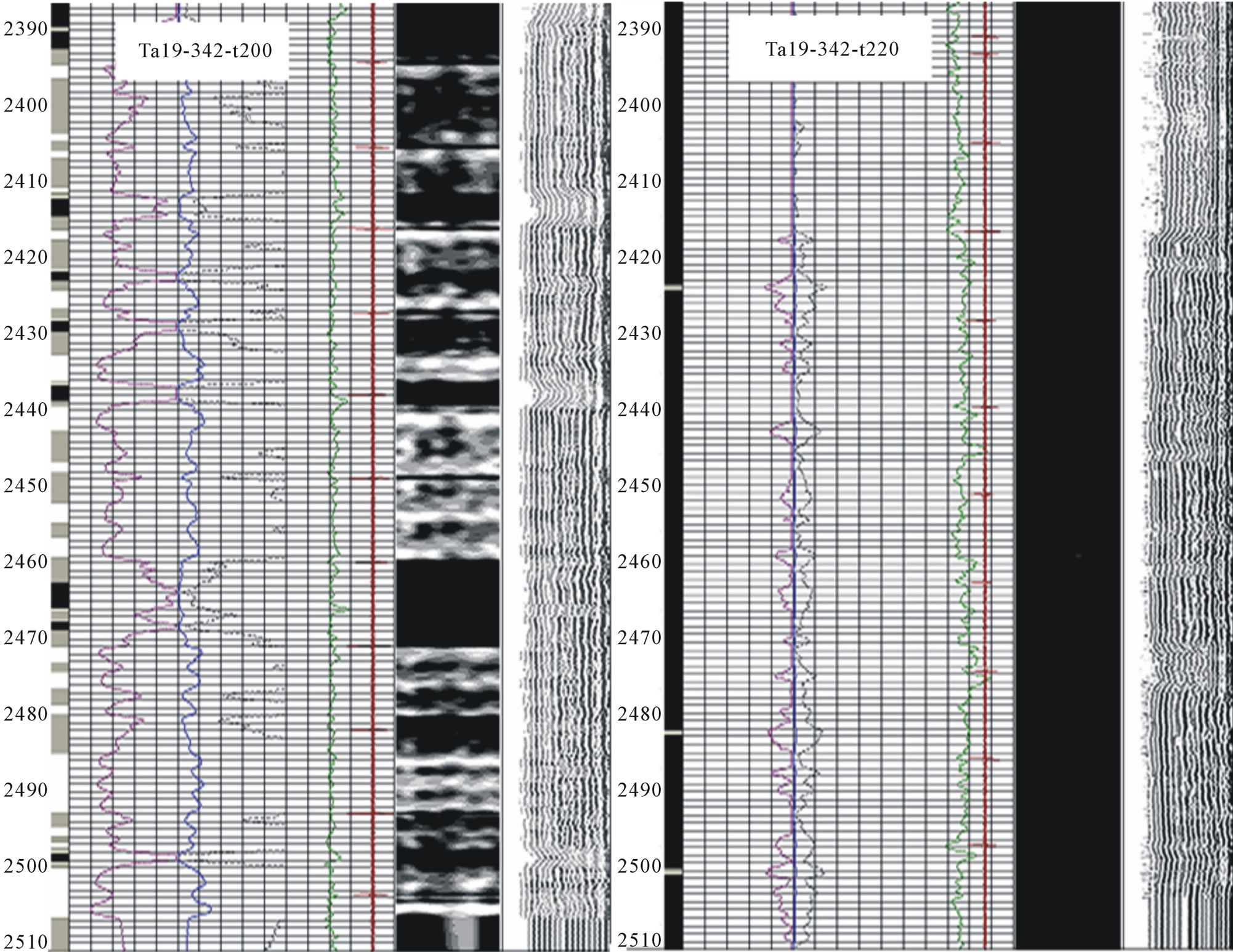
Figure 3. Acoustic amplitude comparison chart of two kinds of systems.
throat Jamin effect, can achieve a good sealing effect. Reduce the risk of a loss, and reduce the damage to the reservoir.
3) Micro-bubble drilling fluid system has excellent performance and good field application good, so control effectively overcut and collapse accidents. Test wells average ROP increased by 56.7% is 8.71 m/h.
4) Through the air-lock and blockage, around the bore formed less than 1 cm in dense temporary plugging the ring, greatly improving the cementing quality and ensuring the needs of the development of the oilfield.
8. ACKNOWLEDGEMENTS
My deepest gratitude goes firstly and foremost to Institute of Petroleum Engineering; the college gives me great support on funding. Without the funding this thesis could not have reached its present form. Secondly, I would like to express my heartfelt gratitude to Yuxue Sun who have instructed and helped me a lot in the course of the study. I am also greatly indebted to other comrades, for their constant encouragement and guidance; I am able to complete the study smoothly.
REFERENCES
- Zhao, F., Wang, P.Q. and Li, X. (2008) Recent advance in Aphron drilling fluids. Drilling & Production Technology, 31, 123-124.
- Wang, H.J., Zhen, J., Zheng, X.H., et al. (2007) Research and application of micro-foam drilling fluid in Daqing Oilfield. Drilling & Production Technology, 29, 88-92.
- Sun, J.S. (2006) Drilling fluid technology anthology. Petroleum Industry Press, Beijing, 135-150.
- Li, G.Q., Wang, H.J., Liu, J.T., et al. (2009) Micro-bubble drilling fluid technology. Petroleum Geology & Oilfield Development in Daqing, 28, 203-207.
- Zhang, Z.H., Yan, J.N. and Fan, S.Z. (2003) Low-density drilling fluid technology. Petroleum University Press, Dongying, 51-54.
- Xu, J.F., Qiu, Z.S. and He, Q. (2010) Anti-sloughing mechanism study and application of circulating microfoam drilling fluid. Drilling Fluid & Completion Fluid, 27, 7-9.
- Wang, W., Jia, L.Y. and Su, Y. (2005) Oil/gas layer protecting techniques in the course of drilling and completion in Hailaer exploration area. Petroleum Geology & Oilfield Development in Daqing, 24, 69-71.

